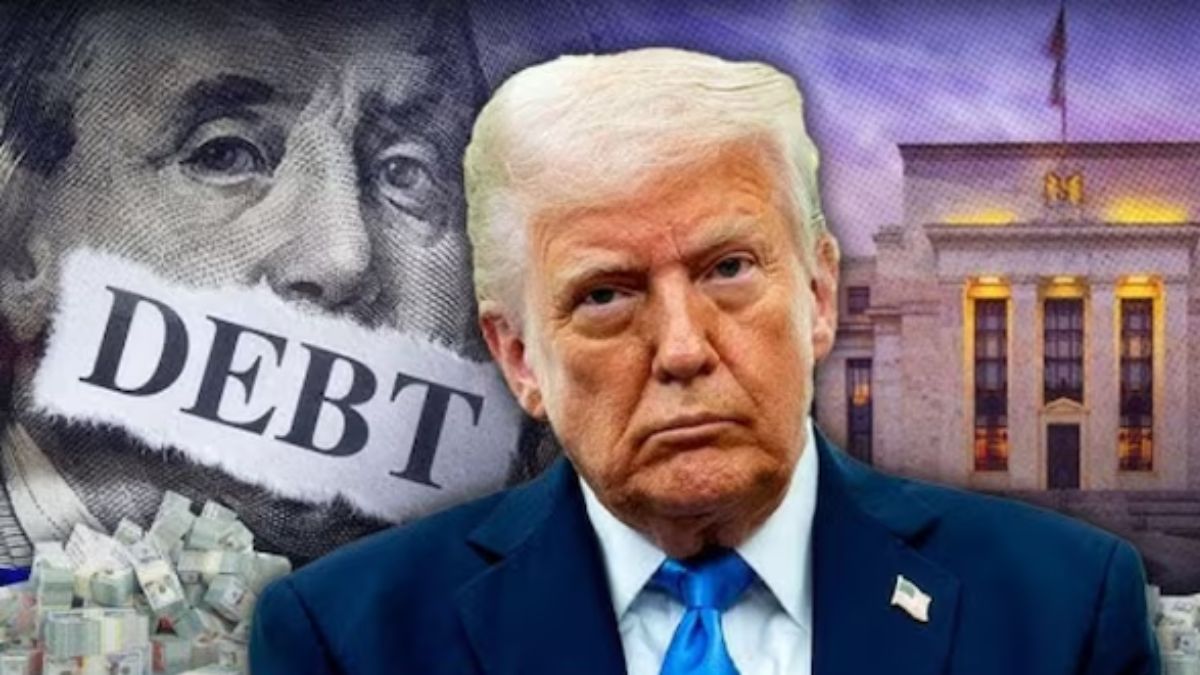President Donald Trump is walking a political and economic tightrope as he pushes for a multitrillion-dollar tax break plan that faces mounting scrutiny from Republican senators, investors, voters and even Elon Musk. At the heart of the challenge is whether the administration can convince skeptics that the proposal won’t further inflate the national debt.
Financial markets have responded warily, reflecting doubts about Trump’s ability to follow through on earlier promises to reduce deficits. Critics say the administration’s rhetoric on cutting spending hasn’t materialised, and the tax bill may lock in higher deficits for years to come.
“All of this rhetoric about cutting trillions of dollars of spending has come to nothing — and the tax bill codifies that,” Michael Strain of the right-leaning American Enterprise Institute told AP. He added that concerns over the administration’s fiscal competence amplify the risks of expanding the deficit further.
The White House has been quick to push back against such criticism. Press secretary Karoline Leavitt dismissed claims that the proposal will worsen deficits, blaming them on flawed forecasts from traditional budget scorekeepers like the Congressional Budget Office.
Trump himself acknowledged the difficulty of making spending cuts while maintaining political support. “We have to get a lot of votes,” he said. “We can’t be cutting.”
That balancing act, retaining GOP unity while delivering on economic promises has left the administration banking on a surge in economic growth to counterbalance the tax reductions. However, many economists and observers are skeptical that growth alone can bridge the gap.
Impact Shorts
More ShortsEven Musk, who once held an advisory role in Trump’s government efficiency initiative voiced disappointment. “The massive spending bill increases the budget deficit and undermines the work the DOGE team is doing,” he told CBS News.
According to the Committee for a Responsible Federal Budget, the combined tax and spending cuts passed by the House last month could add over $5 trillion to the national debt in the next decade, assuming they remain in place. Much like the 2017 tax cuts, many provisions are set to expire in future years to mask their long-term cost—a strategy that has left Congress grappling with difficult renewal decisions now.
But unlike 2017, the fiscal environment has shifted dramatically. With total U.S. debt surpassing $36.1 trillion, borrowing costs are climbing. The interest rate on a 10-year Treasury Note is around 4.5%, up from 2.5% when Trump’s first tax package became law.
The White House Council of Economic Advisers insists that the plan will stimulate rapid economic growth. Council chair Stephen Miran projects annual GDP growth of 3.2% over the next four years—well above the CBO’s 1.9% forecast—and claims this will generate enough revenue to reduce the deficit, especially when paired with tariff proceeds.
“I do want to assure everyone that the deficit is a very significant concern for this administration,” Miran said, arguing the tax cuts would boost investment, labor participation, and domestic output without stoking inflation.
Budget director Russell Vought echoed this optimism, calling fears over fiscal impact “fundamentally untrue.”
But outside experts are far less sanguine. Many say that persistent deficits will likely keep interest rates elevated, dampening overall economic growth and raising borrowing costs for households and businesses.
“This just adds to the problem future policymakers are going to face,” warned Brendan Duke, a former Biden official, noting that Congress could soon confront simultaneous fiscal dilemmas involving Social Security, Medicare, and the expiration of key tax cuts.
Skepticism extends across the ideological spectrum. Kent Smetters of the Penn Wharton Budget Model said the administration’s growth forecasts are “a work of fiction,” and Harvard economist Jason Furman described the tax plan as poorly targeted for long-term competitiveness.
Meanwhile, Senate Republicans such as Ron Johnson and Rand Paul have expressed misgivings about the plan’s fiscal trajectory. Johnson said he believes there are enough GOP votes to stall the bill until more concrete deficit reductions are offered.
Trump’s hope that tariff revenues could cover new deficits also faces legal and practical hurdles. Court rulings have challenged the validity of declaring an economic emergency to justify sweeping trade restrictions.
Despite these obstacles, Trump has remained confident, telling supporters that the plan will usher in prosperity and rapidly reduce the national debt. Treasury Secretary Scott Bessent and other aides have echoed that message, claiming the measures could eventually halve annual deficits.
However, recent research by economists including Douglas Elmendorf, Glenn Hubbard, and Zachary Liscow indicates that while growth can help reduce deficit pressures, it won’t be enough. Yale economist Ernie Tedeschi estimates that stabilizing the debt would require $10 trillion in deficit reductions over the next decade—far beyond what current policies are expected to deliver.
“Growth doesn’t even get us close to where we need to be,” Tedeschi said, adding that most of the cost of the new tax cuts simply extends existing breaks rather than stimulating new economic activity. “It’s treading water.”


)

)
)
)
)
)
)
)
)



